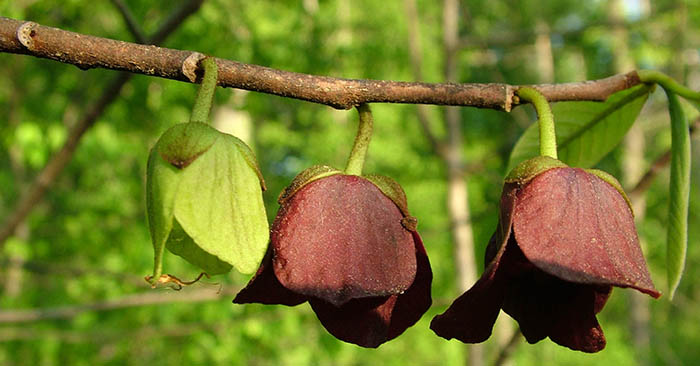Garden Talk
Horticultural Highlight: Pawpaw
In this series, the staff of Duke Gardens highlights plants you’ll find within our 55-acre living collection. This week Maegan Luckett, a horticulturist in the Blomquist Garden of Native Plants, features one of her favorite native N.C. trees.

Botanical name: Asimina trilobata
Common name: Pawpaw
Family name: Annonaceae (Custard-apple Family)
Plant type: Tree
Native range: Throughout the eastern half of Canada and the United States (except New England)
Location in Duke Gardens: Blomquist Garden of Native Plants
Site requirements: Grows in low bottom woods, wooded slopes, ravines and along streams
USDA Hardiness Zones: 5-9

When you think of pawpaw, what comes to mind? Perhaps that it is a deer-resistant, suckering understory tree. Or maybe that it has a yummy fruit, if you can find it, that tastes reminiscent of banana custard or mango. Both of those things are great, but have you ever thought about pawpaw’s flower?
Pawpaw blooms in the spring before the leaves emerge. In this area, they bloom around April, and in the Blomquist the pawpaws are in full bud. I think the flowers are striking and unique looking; they are dark maroon, and to me they look like some mad plant breeder tried to cross a trillium and a hellebore. The flower has a vaguely musty scent that some folks might find off-putting, but the flies and beetles that pollinate it like it.
Speaking of pollinators, part of the reason it is so hard to find pawpaw fruit in the wild is that the trees are self-incompatible and need cross-pollination from another pawpaw tree. They produce root suckers and form colonies, which means that most of the trees in a given area may be just one organism. This makes it challenging for the pollinators to get pollen from one genetically different tree to another.
If you choose to put a pawpaw in your yard, keep in mind that they like to be in the shade when they are young, but they desire more sun when older. More sun may also equal more blooms and thus, if you’re lucky, fruits!
References:
U.S. Department of Agriculture
N.C. State Extension
National Park Service
Photos by Natasha Laguerre (portrait) and Jason Holmes (flowers).






